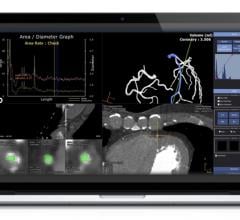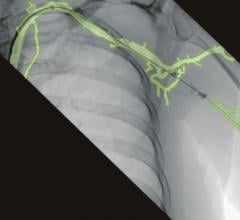Tom Jones, M.D., director, cardiac catheterization laboratories, Seattle Children’s Hospital, explains some of the new ...
Advanced Visualization
Software used to manipulate or enhance CT and MRI datasets, including MPR, and 3-D (3D) image reconstruction, perfusion imaging, 3-D printing, and procedural planning and procedural navigation.
March 23, 2021 — Researchers at the Karolinska Institute in Stockholm, Sweden, have published the first-of-its-kind ...

With increasing complexity of interventional structural heart disease and congenital heart disease interventions, 3-D ...
December 16, 2020 — AI Medic Inc. announced that it has obtained official product certification from the NIDS (National ...
This is an example of the Medis Medical Imaging Quantitative Flow Ratio (QFR) system that offers a fractional flow ...
October 1, 2020 — The U.S. Food and Drug Administration (FDA) granted 510(k) clearance for the SentiAR CommandEP system ...
September 2, 2020 — Patient-specific organ models are being used by the University of Minnesota to better prepare for ...
August 18, 2020 — Ziehm Imaging announces the acquisition of Therenva, a French-based developer of planning and imaging ...

The latest technical advances and trends in computed tomography (CT) and the latest clinical study data were discussed ...
Advanced visualization company Medis recently purchased Advanced Medical Imaging Development S.r.l. (AMID), which ...
Todd Villines, M.D., FACC, FAHA, MSCCT, explains how coronary plaque assessment will become a new risk assessment tool ...
August 4, 2020 — Imaging software company TomTec has released its new TomTec-Arena 2020 product, which offers new ...

There is a promising recent development in cardiovascular computed tomography angiography (CCTA) to analyze plaque to ...
July 16, 2020 — In a groundbreaking new study, researchers at the University of Minnesota have 3-D printed a functioning ...

Here is an overview of a few of the biggest technology advances in cardiovascular computed tomography (CT). These are ...


 May 26, 2021
May 26, 2021









